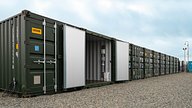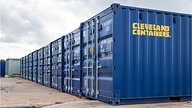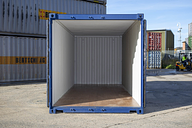With constant updates and changes in how planning permission can be obtained, organisations may find it challenging to determine the best approach for establishing or legally expanding their self storage site. To help you become an expert in understanding the process of obtaining the necessary planning permission, we have created a detailed, step-by-step guide with help from ET Planning, to assist you.
Step 1: Determine If You Need Planning Permission
The need for planning permission depends on whether the containers support an existing use of the land (e.g., storing tools/equipment) or are for a new use/purpose.
Step 2: Understand the Planning Terms
Containers are not considered buildings; they fall under 'use of land'. Generally, containers don't need planning permission if they support an existing business. However, if the containers are for a new use, such as renting out to businesses or individuals for storage, planning permission for a change of use or mixed use is typically required.

Step 3: Farm Diversification Considerations
If you're introducing self storage to diversify your farm business, the planning proposal may differ from a fully commercial purpose. You will need to clarify whether the self storage is to support existing farm activities or a complete change of land use.
Step 4: Gather Necessary Documents
Every council requires specific documents for planning application submissions. These applications are reviewed on a case-by-case basis, considering factors such as:
- Location
- Amount of land or percentage of the site it would take up
- Current activities on the land
- Frequency of site visits
- And more

Step 5: Consider Hiring a Planning Consultant
Planning companies can advise and support your application process. Note that applications typically take 8-12 weeks to be processed, but they are a good hand to help you understand the complexities of planning permission.
Step 6: Assess Potential Restraints
Identify any constraints that might affect your application, such as being in a greenbelt area or on a floodplain. Consulting with the council or a planning company can provide insights and solutions for these issues.

Step 7: Evaluate Traffic and Road Access
For planning approval, ensure there is enough space for large vehicles to enter, exit, and manoeuvre on the site.
Step 8: Plan for Biodiversity Net Gain
The government has introduced this as a mandatory requirement for many applications - to enhance the ecology on a site by 10%. If this is relevant to you, consultants will need to review their site's current conditions and look for opportunities to enhance biodiversity to gain planning permission. This could be by extra planting, boundary hedgerows, trees, and bird boxes. You can find out more about biodiversity net gain from the government.
This is easier to achieve with hardstanding land that has already been developed. If you want to build on a green area, you might need more land than what you actually want to use for storage in order to meet this requirement.

Step 9: Submit Your Application
Prepare and submit your planning application with all required documents. Be thorough and address all potential issues to improve your chances of approval.
Step 10: Follow Up
Stay in contact with the council or your planning consultant to track the progress of your application. Be prepared to provide additional information if requested.
By following these steps, you can navigate the process of obtaining planning permission for your self storage site effectively. If you require more advice on this topic, check out our ET Planning Chatterbox episode.
Need our help?
Talk to us about your container project today...
You may also be interested in...

Shipping Container Maintenance 101: Tips for Keeping Your Container in Good Condition
Container maintenance tips: Preserve your shipping container's condition for longevity.

Do I Need Planning Permission for a Shipping Container?
Do you need planning permission for a shipping container on your land? Use, size, location, and regulations matter.

How to Choose the Right Size Shipping Container for Your Needs
Mastering shipping container selection: Understand cargo, sizes, dimensions, types, routes, and modes for hassle-free transportation.



.png)
0 Comment
Please leave a comment using the form below